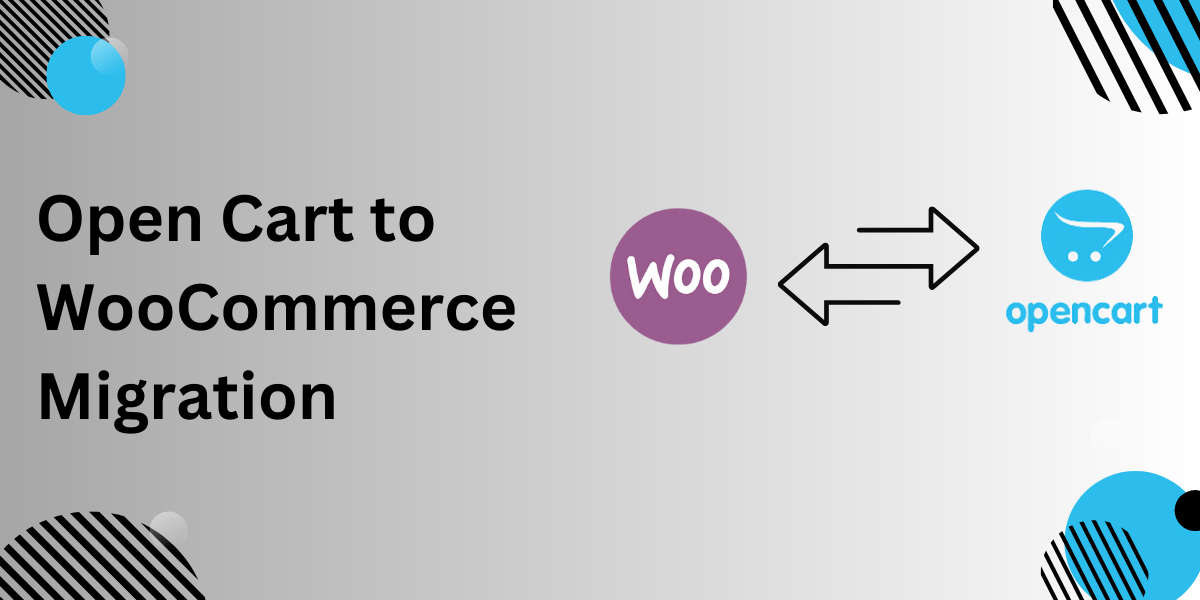Switching from OpenCart to WooCommerce offers online businesses more flexibility, a better user experience, and countless customization options. Migrating to WooCommerce, with its vast plugin library and user-friendly management, is a practical choice for growing businesses. Here, we’ll guide you through each step, highlight tips for a successful switch, and cover common issues to avoid.
Why Consider Moving from OpenCart to WooCommerce?
For OpenCart users ready to expand or needing advanced customization, WooCommerce offers better SEO tools, an easier interface, and endless design options. With the backing of WordPress, WooCommerce helps eCommerce sites achieve the look, functionality, and performance they need to compete.
Key Benefits WooCommerce Offers:
- SEO Optimization: WooCommerce’s SEO plugins like Yoast SEO give users better control over product page rankings.
- Enhanced Flexibility: WooCommerce offers extensive customization, making it ideal for unique branding.
- Integrated Marketing Tools: From social sharing to abandoned cart recovery, WooCommerce has numerous plugins for effective digital marketing.
- Scalability for Growing Businesses: WooCommerce accommodates growing catalog sizes, allowing users to expand their offerings without compromising site speed.
Steps to Prepare for OpenCart to WooCommerce Migration
1. Plan Data Transfer Requirements
Take stock of your essential data. Decide which data types need to be migrated: products, categories, customer details, order histories, and SEO configurations. A clear plan keeps the process efficient and organized.
2. Choose a Reliable Migration Tool
There are several migration tools available, such as Cart2Cart and FG Magento to WooCommerce. Evaluate their features, read reviews, and choose one with a strong reputation to minimize the chance of data loss or errors.
Migration Process for OpenCart to WooCommerce
Step 1: Set Up a Secure WooCommerce Store
Before migrating, ensure your WooCommerce setup is live and ready. Customize your theme to align with your brand, and ensure that WordPress and WooCommerce plugins are updated.
Step 2: Connect Migration Tool and Select Data
Link your OpenCart store to the migration tool and specify the data you’d like to transfer. Double-check settings for product categories, customer information, and order histories to avoid data mismatches.
Step 3: Conduct a Trial Migration
A trial migration helps identify potential issues before the complete migration. Check for any missing data or formatting errors during this phase.
Step 4: Execute Full Migration
Once the trial migration is error-free, proceed with the full migration. Larger sites may take longer; remain patient and ensure that your servers are prepared for heavy data transfer.
Step 5: Review and Adjust WooCommerce Setup
After migration, review WooCommerce’s product categories, customer data, and SEO settings. Test the payment gateways and shipping plugins to verify everything functions as expected.
Case Study: GoGreen Teas’ Migration Story
GoGreen Teas, an eco-friendly tea retailer, decided for OpenCart to WooCommerce migration to support its expanding business and enhance its marketing capabilities. After the switch, GoGreen saw a 20% increase in site speed, a 40% improvement in SEO performance, and gained access to extensive digital marketing plugins.
Key Takeaways from GoGreen’s Migration:
- Improved SEO and User Experience: Yoast SEO tools allowed GoGreen to optimize pages, improving search engine rankings and user engagement.
- Enhanced Product Customization: WooCommerce’s customization options helped GoGreen create attractive product layouts and upsell related products.
- Effective Email Marketing Integration: Plugins like MailChimp for WooCommerce enabled GoGreen to implement automated email marketing, increasing customer retention rates by 25%.
Common Challenges in Migration and Solutions
1. SEO and URL Issues
To retain your SEO rankings, set up 301 redirects to redirect old OpenCart URLs to their new WooCommerce counterparts. Plugins like Redirection simplify this process and maintain your site’s SEO integrity.
2. Product Categorization Adjustments
WooCommerce may interpret product categories differently from OpenCart. Review category settings and make necessary adjustments to maintain a consistent browsing experience for customers.
3. Plugin Compatibility
Not all plugins are compatible with WooCommerce, so review and install WooCommerce-compliant alternatives. If you relied on specific OpenCart plugins, look for similar options available within the WooCommerce ecosystem.
4. Data Formatting Issues
Certain fields, such as SKU codes or pricing structures, may not transfer as expected. Review these fields during your trial migration to ensure that everything is accurate.
Post-Migration Tips for WooCommerce Optimization
1. Optimize SEO Settings
After migration, install Yoast SEO to help optimize product listings, blog pages, and other content. Good SEO practices boost your visibility and attract more traffic.
2. Enhance Site Speed with Caching Plugins
Install caching plugins like WP Rocket or W3 Total Cache to improve site speed, which is crucial for retaining visitors and improving SEO rankings.
3. Install a Review Plugin
Customer reviews build trust. Plugins like WooCommerce Product Reviews Pro allow customers to leave feedback, boosting credibility and SEO benefits.
4. Monitor Site Analytics
Use Google Analytics and WooCommerce analytics to track customer behavior, conversion rates, and product performance. Analyzing this data helps you make informed improvements.
5. Enable Mobile Responsiveness
Choose a mobile-responsive theme to ensure an optimal shopping experience for mobile users, which is crucial as mobile eCommerce traffic continues to rise.
Wrapping Up: Preparing for a Smooth OpenCart to WooCommerce Migration
Migrating from OpenCart to WooCommerce opens doors for enhanced flexibility, better marketing integration, and a user-friendly interface. With the right tools, careful planning, and some optimization, your WooCommerce store can offer a superior shopping experience that’s ready for growth.
Frequently Asked Questions
1. Is there a risk of losing data during migration?
Data loss is minimal if you use a trusted migration tool and perform backups. Conducting a trial migration further minimizes risks.
2. Do I need coding skills for the migration?
Most migration tools require no coding knowledge. However, minor adjustments may benefit from basic knowledge of WordPress and WooCommerce.
3. How long does it take to migrate an OpenCart store?
Time varies based on store size. Small stores may take a few hours, while large ones can take a day or more.
4. Will my SEO rankings be affected?
With proper redirects and SEO adjustments post-migration, your rankings should remain stable or even improve over time.
5. Are all OpenCart plugins compatible with WooCommerce?
No, OpenCart plugins are not compatible with WooCommerce, but you can find similar alternatives in WooCommerce’s extensive plugin library.



